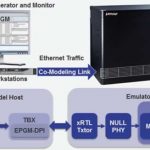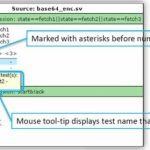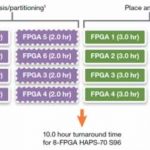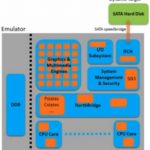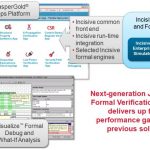SmartDV started as a small setup in Bangalore in 2008 and by now is one of the most respectable VIP (Verification IP) companies in the world. Having a portfolio of 83 VIPs in its kitty and growing, it has a large customer base, including the top semiconductor companies around the world. The company has grown significantly and is raring… Read More
Tag: verification
Testing Ethernet with virtual co-modeling
Ethernet is suddenly a hot topic in SoC design again. The biggest news may be this: it’s not just the cloud and enterprise networks. Those are still important applications. The cloud is driving hard for more ports at 25G server and 100G switch speeds according to a recent Dell’Oro Group report. Enterprise networks are driving for… Read More
Aldec updates two EDA product lines
Continuous, incremental improvement based on customer feedback and insight from researchers is a pillar of the Aldec EDA strategy. Within the last two weeks, two of the Aldec product lines – Riviera-PRO, and ALINT-PRO-CDC – have seen new version releases. Here’s a quick look at some of the highlights of both.
Riviera-PRO 2015.06… Read More
More FPGA-based prototype myths quashed
Speaking of having the right tools, FPGA-based prototyping has become as much if not more about the synthesis software than it is about the FPGA hardware. This is a follow-up to my post earlier this month on FPGA-based prototyping, but with a different perspective from another vendor. Instead of thinking about what else can be done… Read More
Boost the Market for Interposer and 3D ICs with Assembly Design Kits
The traditional system-on-chip (SoC) design process has fully qualified verification methods embodied in the form of process design kits (PDKs). Why is it that chip design companies and assembly houses have no IC/package co-design sign-off verification process?
Package die are often produced using multiple processes and… Read More
How Emulation Enables Complex Power Intent Modeling
As the number of CPU, GPU, and IP is growing in an SoC, power management is becoming more and more a complex task in itself. A single tool or methodology may not be enough for complete power management and verification of an SoC. In an SoC, there can be multiple modes of operations involving hardware and software interactions, different… Read More
EDA Acquisition to Drive SoC realization
A week ago I was reading an article written by Daniel Nenni where he emphasised about semiconductor acquisitions to fuel innovation. We would see that in a larger space, not only in semiconductor and FPGA manufacturing companies (e.g. Intel and Altera) but also in the whole semiconductor ecosystem. If we see it from technical perspective,… Read More
Next Generation Formal Technology to Boost Verification
With growing complexities and sizes of SoCs, verification has become a key challenge for design closure. There isn’t a single methodology that can provide complete verification closure for an SoC. Moreover creation of verification environment including hardware, software, testbench and testcases requires significant … Read More
A Robust Lint Methodology Ensures Faster Design Closure
With the increase in SoC designs’ sizes and complexities, the verification continuum has grown larger to an extent that the strategies for design convergence need to be applied from the very beginning of the design flow. Often designers are stuck with never ending iterations between RTL, gate and transistor levels at different… Read More
Synopsys Software Integrity: Find All the Bugs
A couple of days ago Synopsys announced that they were acquiring Quotium’s product Seeker. This is an interactive application security testing (IAST) product. Synopsys are acquiring the product and the R&D team, not the whole of Quotium. The Seeker solution is a pioneering solution for IAST that helps businesses find high-risk… Read More



